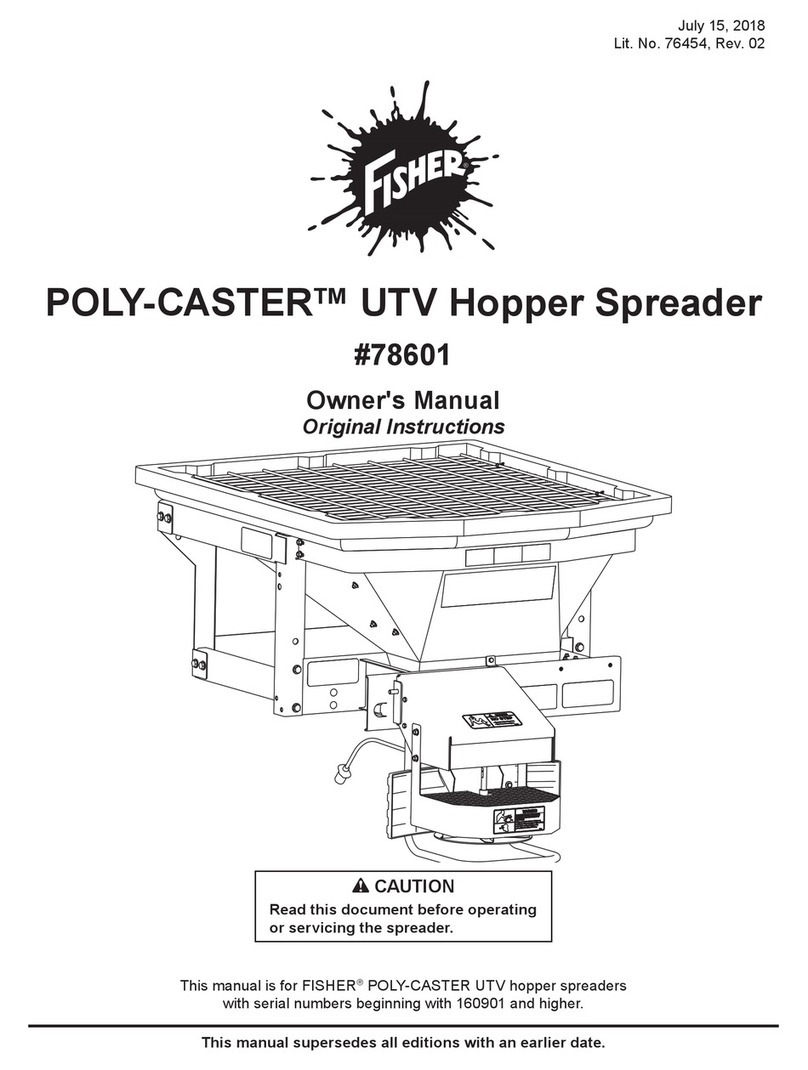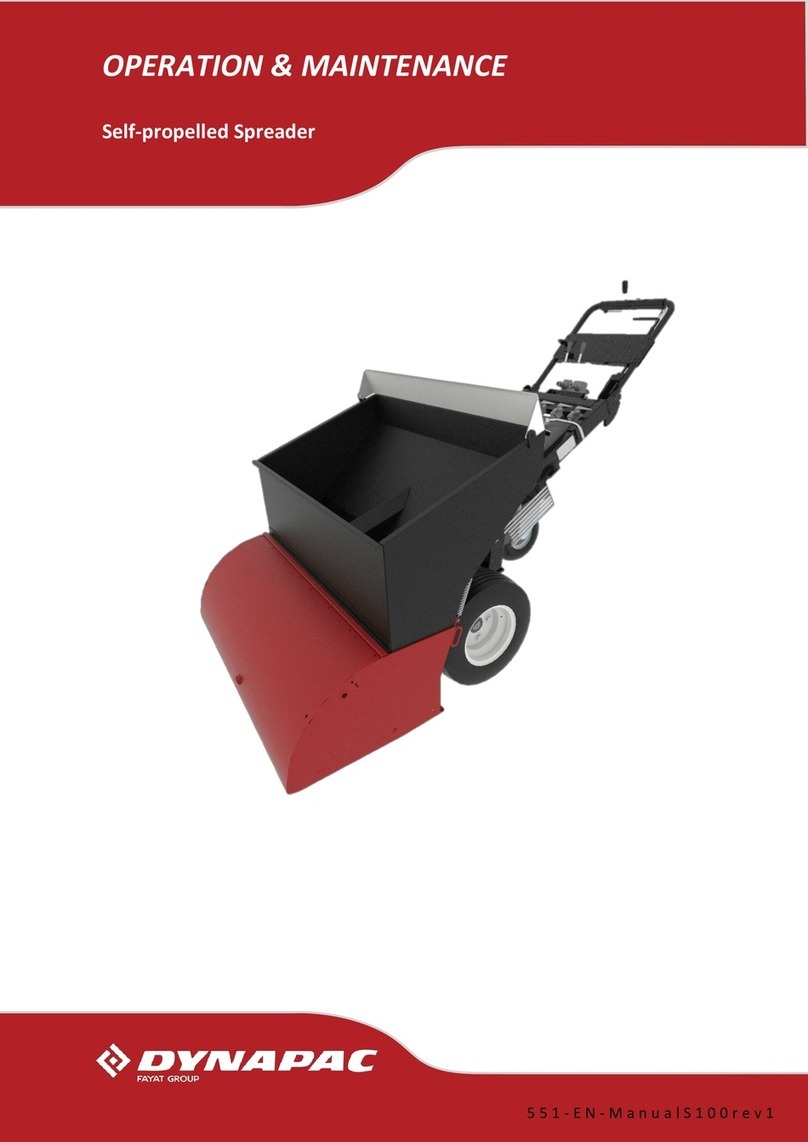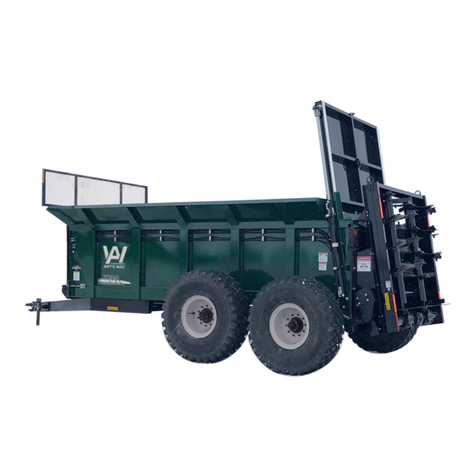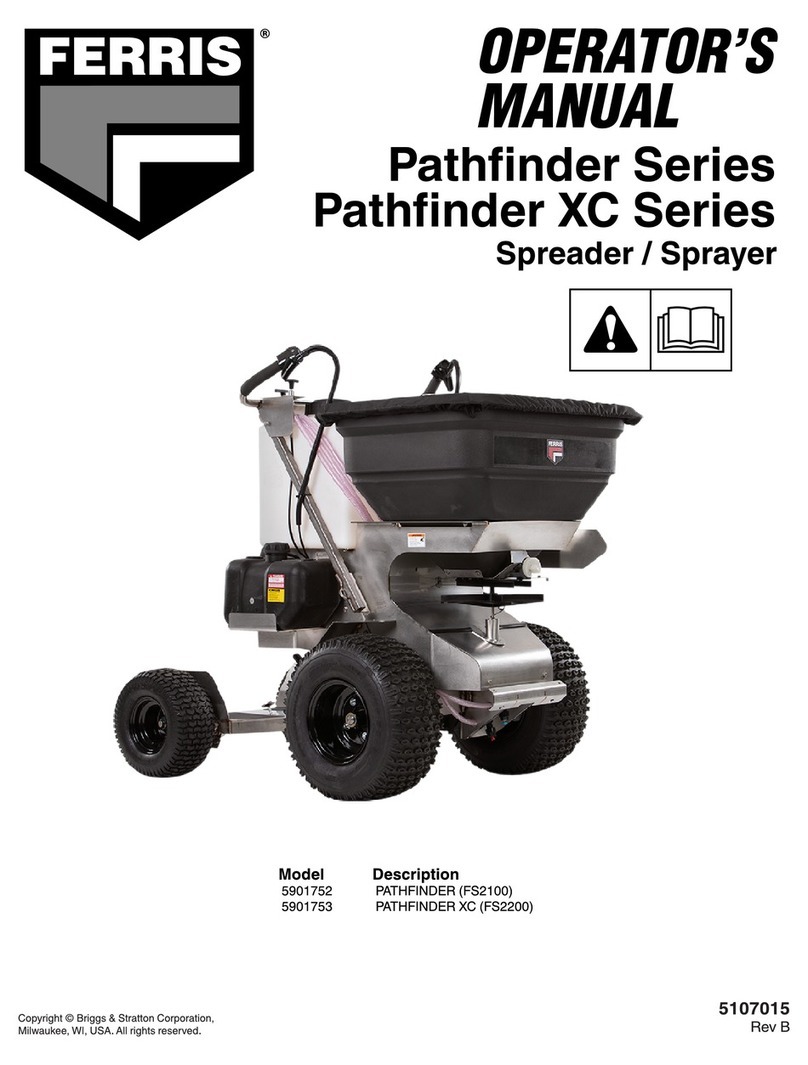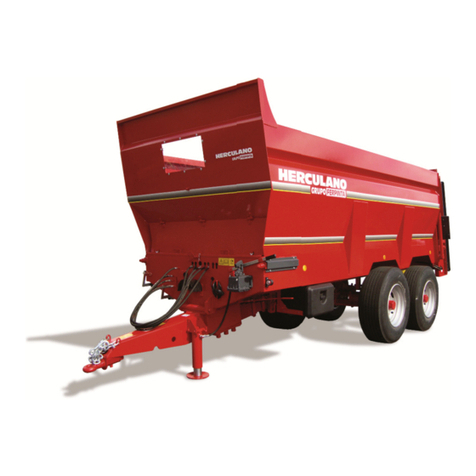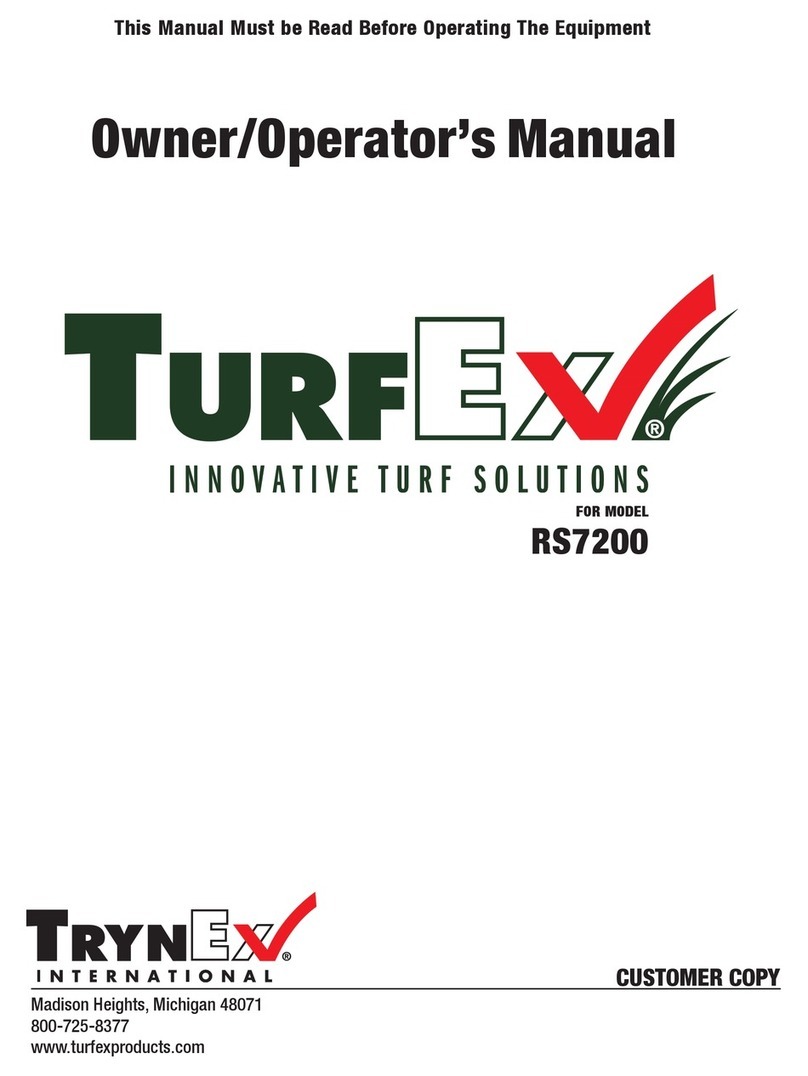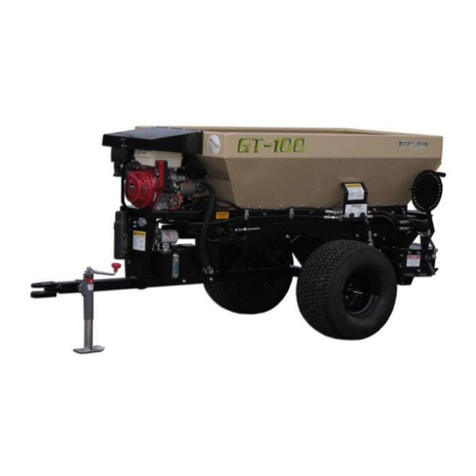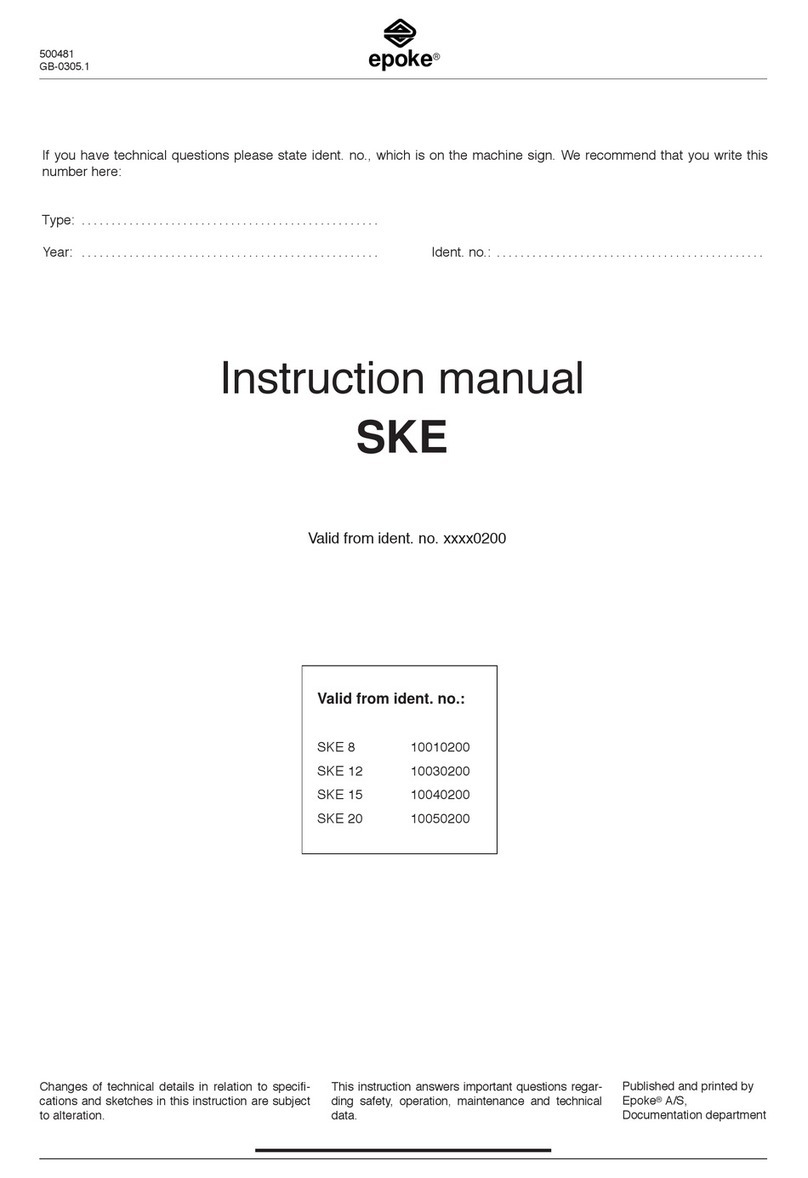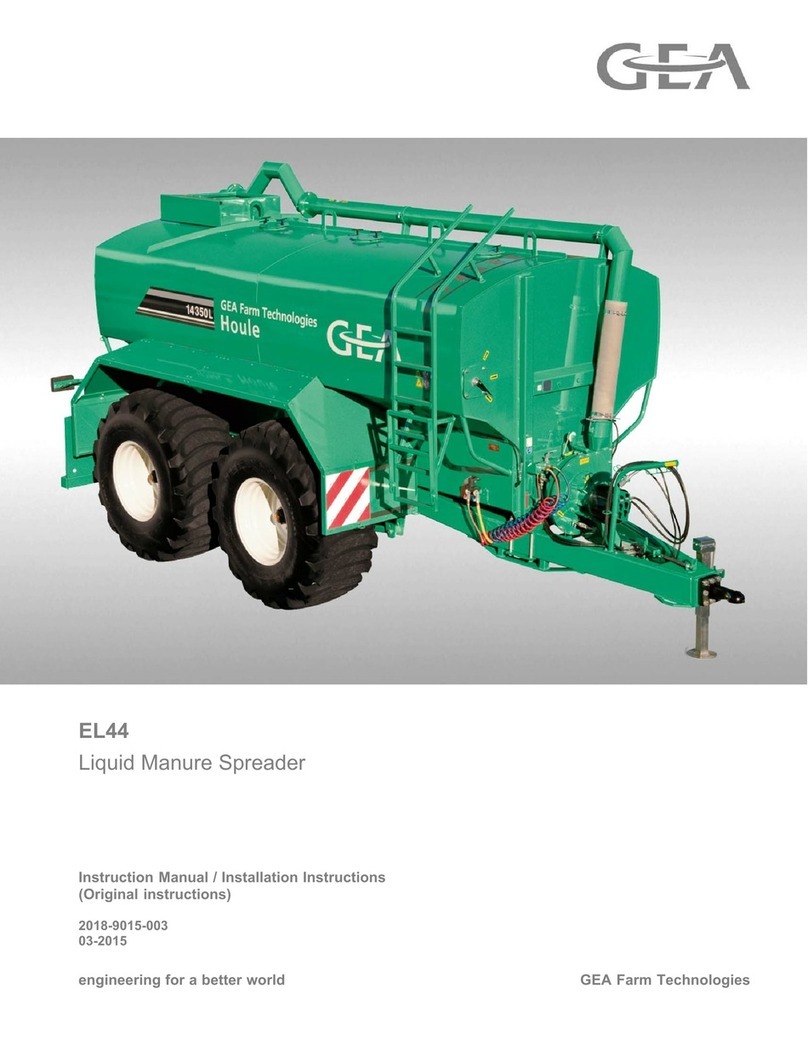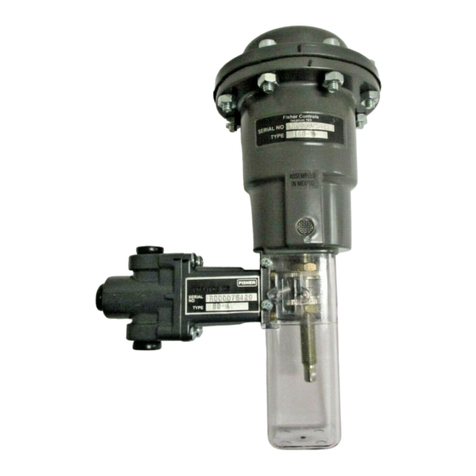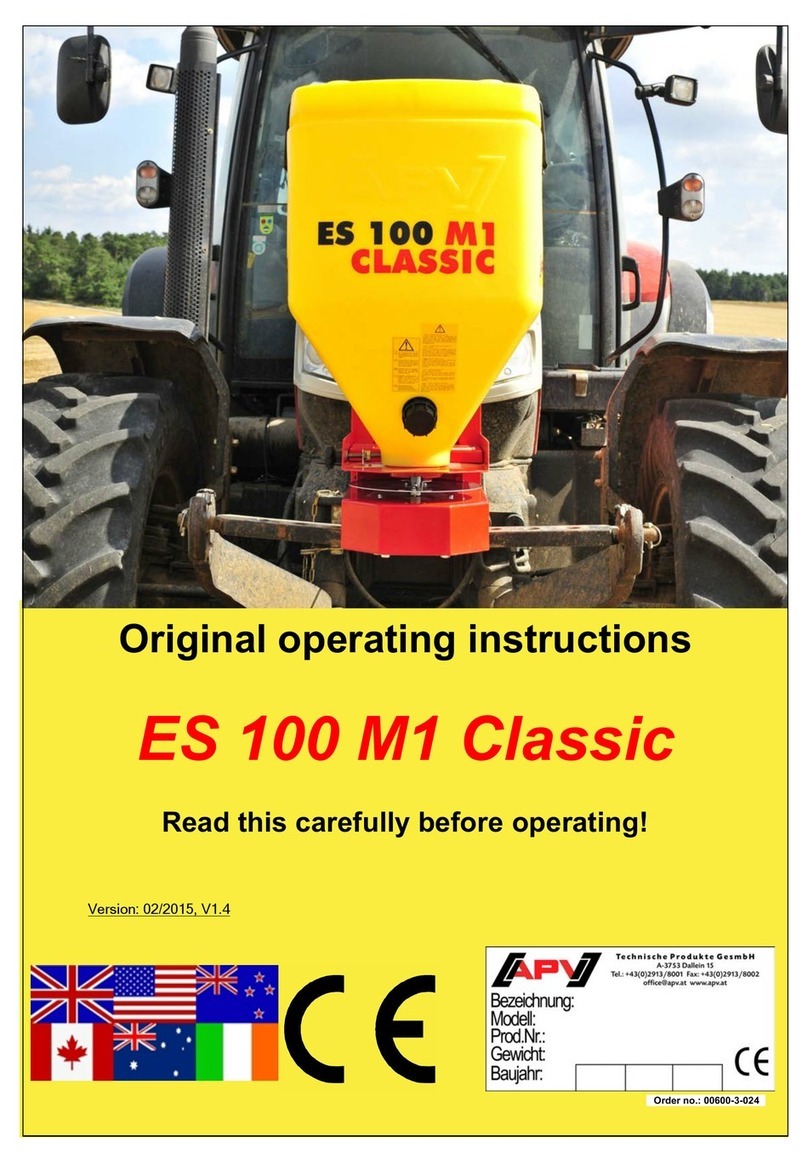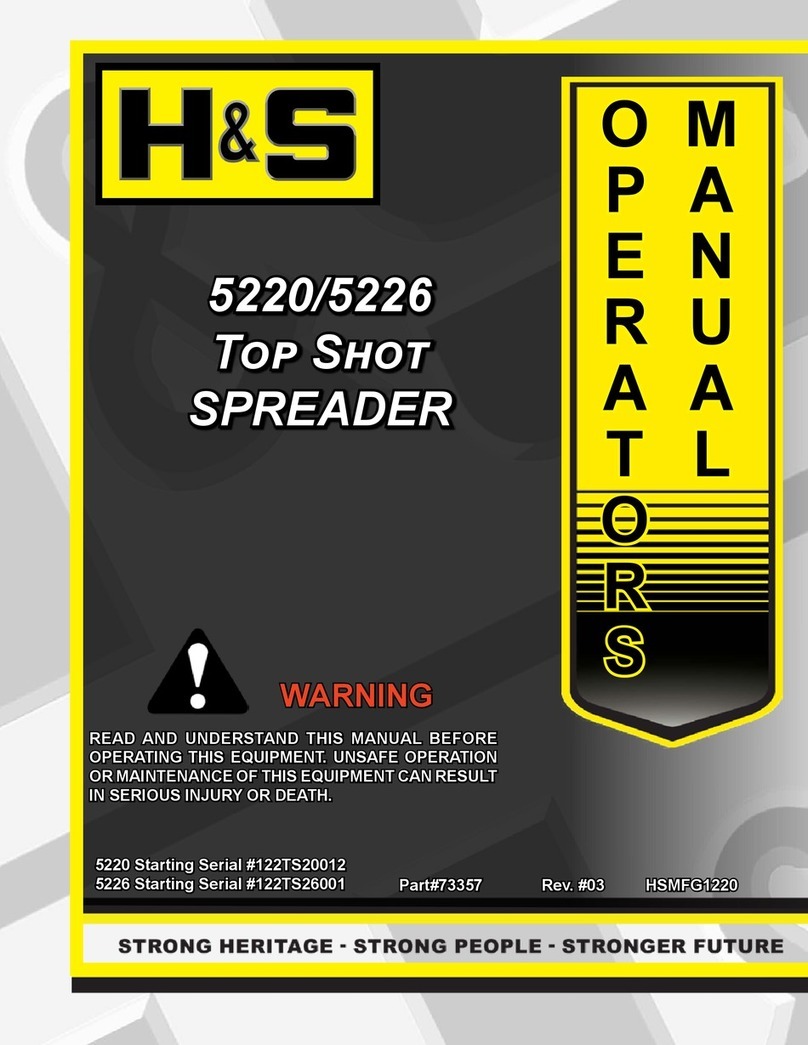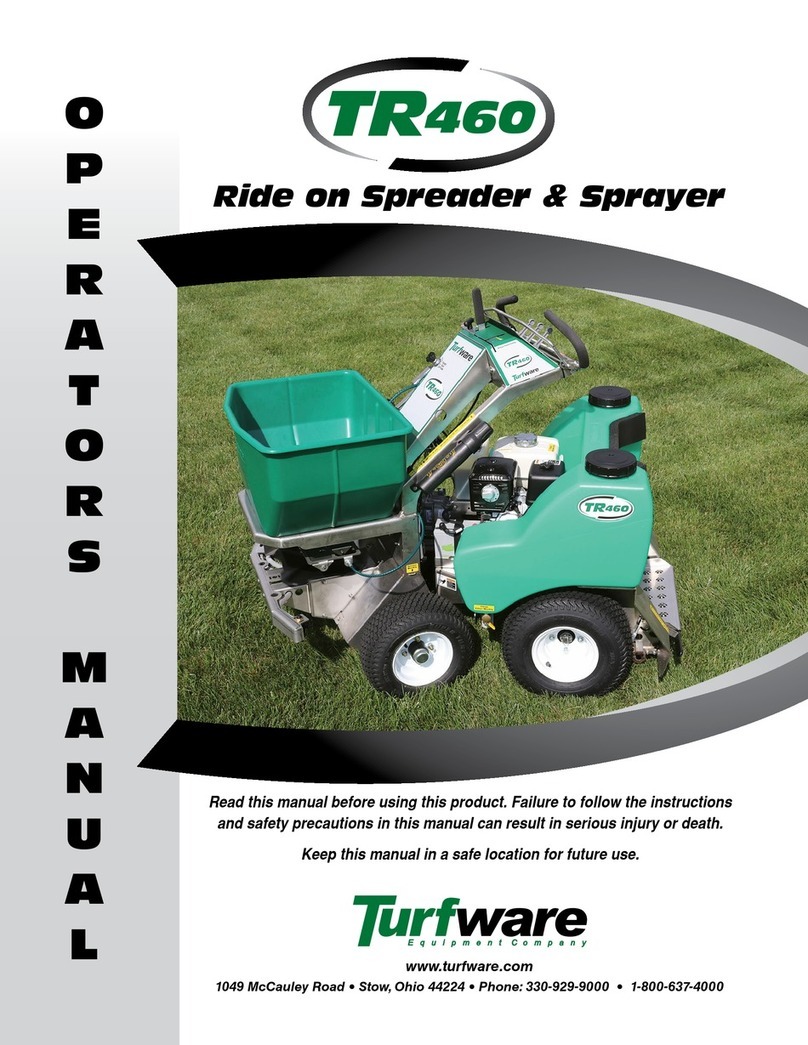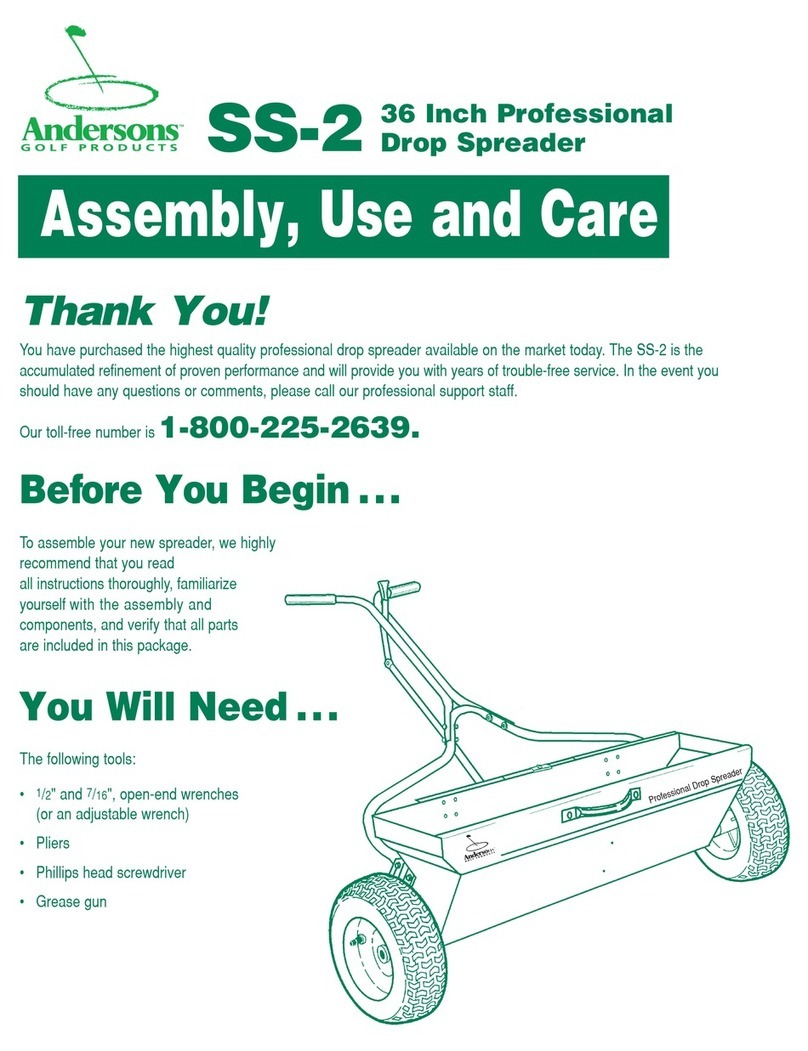
Table of contents
3
Table of contents
Preface ....................................................... 5
Target group of this manual 5
Meaning of symbols 6
Safety ......................................................... 7
For your safety 7
Other guidelines 7
Warning stickers 8
Safety requirements 11
Getting familiar with the machine ........... 25
Applications of the machine 25
RotaFlow spreading system 25
Adjust carefully 25
Spreading pattern 28
Technical specifications 31
Before first use ......................................... 33
Inspection of the supplied machine 33
Mounting instructions 33
Tractor provisions 40
Mounting the coupling shaft 41
Connecting to the tractor ......................... 45
Connecting the machine 47
To be done before spreading .................. 52
Find the correct settings for the spreader
and set it accordingly 52
Setting the spreader 57
Working width 60
Application rate 63
Inclination 71
PTO shaft rpm 71
Filling 72
Calibration test 75
Check the spreading pattern (tray test) 80
Driving on the road ................................... 95
Before taking the road 95
Preparing the machine to be transported 96
Use in the field .......................................... 97
Adjusting the machine 98
Set tramlines 101
Spreading 103
Border spreading 108
Failure and stoppage 114
Storing the machine ................................. 118
Cleaning 119
Disconnecting the machine 120
Maintenance ............................................... 123
Maintenance intervals 125
Oil and grease content 126
Coupling shaft 126
Gear boxes 128
Connectors 128
Torques 129
Checking the hydraulic system 130
Check the settings of the dosing
mechanism 132
Check the setting mechanism of the
discharge point 137
Replacing agitator axle seal 140
Accessories ............................................... 142
Troubleshooting ........................................ 146
Trouble-shooting table 146
Falling into disuse ..................................... 149
Liability ....................................................... 150
Liability 150
Complaints 151
Guarantee 151
EC declaration of conformity ................... 152
Notes .......................................................... 153
Index ........................................................... 154
